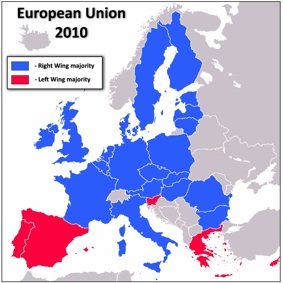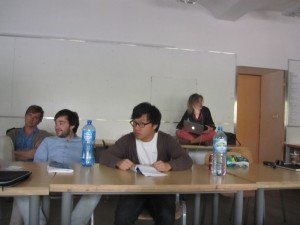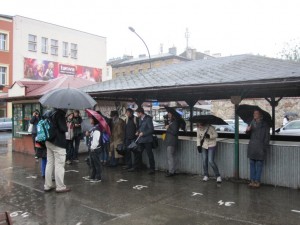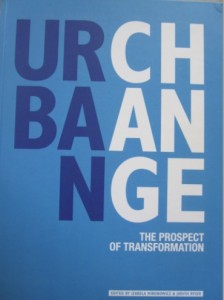Open Cities 35 Open Cities – Open Minds
Diversity: driver of openness
Have a look at the EU map. It is almost entirely ‘blue’ and the remainders, e.g. Spain and Portugal, are bound to follow in that direction after elections.
This has never happened before even when the EU was a small community with only a handful of member states. The emergence of extreme right wing movements adds a sombre shadow to this trend.
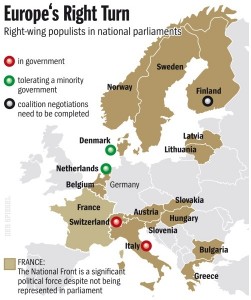
2_dia extreme right wing parties in Europe Map source: http://taiwiki-wedbee.blogspot.com/2011/04/right-wing-populist-parties-gaining.html
If diversity is one of Europe’s assets, this trend towards right wing convergence may be a worrying development. Austerity measures, the assumed remedy to heal our current form of ailing capitalism, are reinforcing this converging trend of the EU. Should those who believe in a unified – or better still – a uniform Europe rejoice? May be not under the current circumstances.
“Reise-Uni” (travelling university)
There is hope though. A remarkable experiment between eight universities in the EU – straddling from east to west and from north to south – can be perceived as a redress of the push to conformity and sameness in Europe. Initiated by the Brandenburgische Technische Universitaet Cottbus and attracting students from all over Europe, this pilot, two-year master course is taught by eight universities and the ‘European Research Network’.
http://www.tu-cottbus.de/fakultaet2/de/designmethods/1/masterstudies.html
The students move from university to university in different cities to undertake workshops over a year and a half, after which they complete their personal work at the lead university Cottbus.
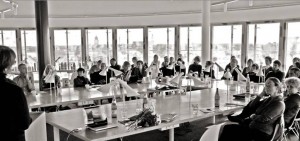
3_dia intercultural interdisciplinary interaction at the university in Cottbus source: http://www.tu-cottbus.de
This course is inspired by an ancient European tradition of artisans who were perfecting their skills by travelling and working throughout Europe before they could obtain their ‘master’ qualification. Similarly artists undertook ‘classical’ journeys to different European countries to learn and perfect their skills. This master course builds on the same intensive, interdisciplinary, project-oriented and cosmopolitan tradition.
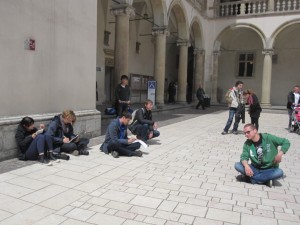
4_dia students sketching in Krakow to gain a better understanding of the place. source: Judith Ryser
Diversity fosters open minds
Such an undertaking builds on cooperation, respect for, and across various cultures, mutual recognition and, above all, human capacity which stems from the diversity of the students and the teachers. The only continuity of this course is the student group which travels and works together.
By doing so, the students acquire what no text book could offer them. They have to accommodate different lifestyles and values in different urban environments, climates and contexts. Through continuous interaction, negotiation and mediation they are discovering cities and their very own professional preoccupations .
They encounter diverse ways of thinking and perceiving the same world in which they are asked to intervene as professionals of the built environment from their own perspective and cultural standpoint .
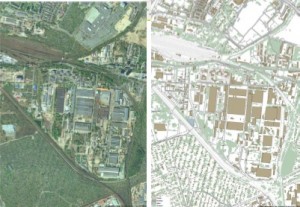
7_dia industrial brown field site up for regeneration ideas by the Cotbuss master students source: Wroclaw Technical University
In turn, this experience motivates them to revisit their own views and positions in their own lives and work, as well as in relation to others and to their cultural baggage.
This dynamic experience can be stressful as it continuously challenges conventional wisdom. Overcoming frustration, learning to compromise, taking on board hitherto alien perspectives constitutes the core of their learning process. It enhances the tacit knowledge of the students, as well as their human capacity. This innovative experience will enable them to navigate successfully in intercultural waters during their careers ahead.
Benefits accrue to all those who come in contact with this experience: the teachers at the various universities, those who live and work in these cities, and especially those who form part of the interaction during the workshops, including people encountered on the selected sites. They all discover different ways of seeing and evaluating the challenges presented by the workshop assignments. Overall, such an experiment has great potential to contribute to ‘open cities’.
Results
EUSS: European Urban Summer School.
The book on Urban Change (edited by Izabela Mironowicz and myself) illustrates a successfully completed ‘first’ of this European wide, integrated approach. It presents the results of the European Urban Summer School supported by UN-Habitat held in Wroclaw in 2010. It illustrates a creative approach involving a diverse group of young professionals in project work, complemented by inputs of professionals and academics from all over Europe (for copies of the book, contact Wroclaw technical university in Poland, or access the AESOP website < http://www.aesop-planning.eu/>). This work has opened minds when producing solutions toward Wroclaw, an open city with cosmopolitan ambitions.
Open Cities
The Open Cities programme, initiated by the British Council has brought together an increasing number of cities which see an advantage in creating and sharing knowledge. The phase enabled by the EU URBACT programme is coming to an end. The test of its success lies in further cooperation between these cities and others, in new initiatives which will generate synergy to the benefit of all, and not least in the diffusion of these cooperative ventures within the cities, their surroundings and their wider regional and national contexts. It was a pleasure to be invited to contribute my thoughts to this programme sa an ‘official blogger’ on the British Council Open Cities website, and I will continue to write about open cities on my own website www.urbanthinker.com
Perhaps a similar exercise should be made available to national politicians in interactive cooperation with politicians from different member countries which, together, are expected to turn the European Union into a viable space with an open mind.

